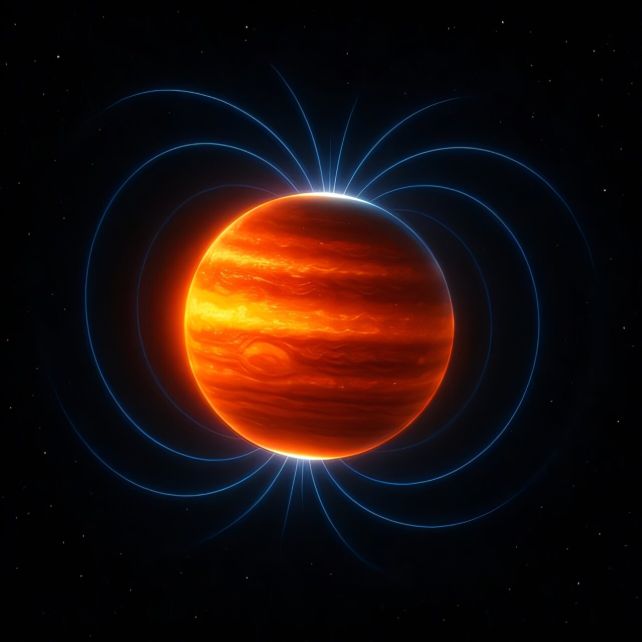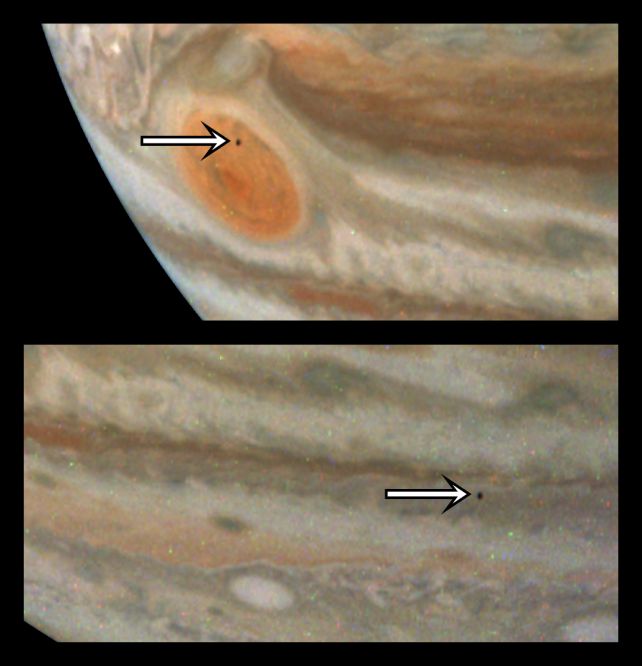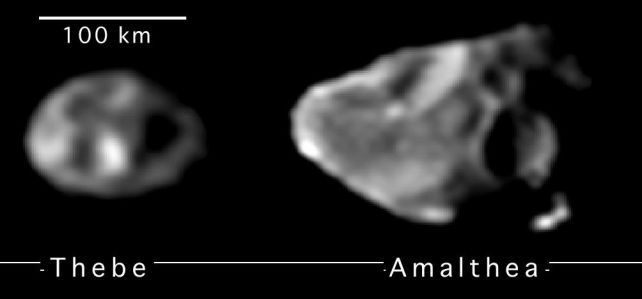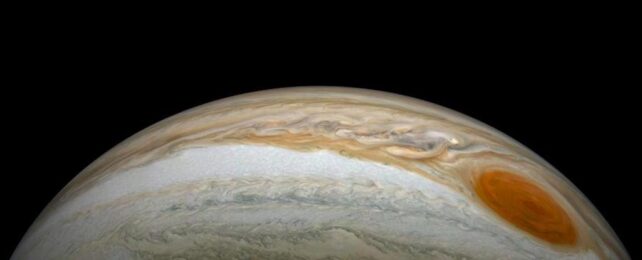Jupiter's already the big kahuna of the Solar System, an absolute unit of a planet with a mass 2.5 times greater than all of the rest of the planets combined.
Prepare, then, to have your mind blown – the Solar System's biggest planet was once even bigger. New calculations suggest that early Jupiter could have had as much as 2.5 times its volume today, say astronomers Konstantin Batygin from Caltech and Fred Adams of the University of Michigan.
Based on their study of two of the moons of Jupiter, the scientists have found that, just 3.8 million years after the first solid materials formed in the Solar System, Jupiter was 2 to 2.5 times its current volume, with a significantly more powerful magnetic field to boot.
This is a finding that supports the bottom-up method of planet formation for the giant gas-shrouded world.

"Our ultimate goal is to understand where we come from, and pinning down the early phases of planet formation is essential to solving the puzzle," Batygin says. "This brings us closer to understanding how not only Jupiter but the entire Solar System took shape."
We believe that rocky worlds, like Mercury, Venus, Earth, and Mars, form from the bottom up, a gradual accumulation of dust and rocks to eventually build an entire world, with a differentiated core and all. This is known as core accretion.
Gas giants are thought to start out the same way, but once they reach a certain mass, around 10 times the mass of Earth, they have enough gravity to retain a substantial gas envelope, and begin to accumulate that, too. This process is thought to have taken place in the outer Solar System, since there wouldn't be enough material closer to the Sun to accumulate the large core.
Since the formation and evolution of Jupiter is thought to have played a key role in the formation and evolution of the architecture of the Solar System, the details of how it was born and how it grew are of intense interest to planetary scientists. Since we can't just, you know, rewind the Solar System though, we need to look at what's happening now to try and reconstruct the past.
Typically, this involves using standard models of planet formation collected from observing planetary systems (including our own) throughout the Milky Way and constructing a model based on those observations. These models, however, involve a lot of guesswork and connecting the dots, and as such, tend to leave significant uncertainties.

Batygin and Adams took a different approach: they studied the orbital motions of Amalthea and Thebe, two tiny Jovian moons that orbit close to the planet, closer even than the orbit of Io. The orbits of these tiny moons are tilted with respect to Jupiter's equator.
These tilts, previous work has shown, can be used to back-trace the orbital history of these tiny moons. Batygin and Adams used that orbital history to reconstruct the early evolution of Jupiter.
"It's astonishing that even after 4.5 billion years," Adams says, "enough clues remain to let us reconstruct Jupiter's physical state at the dawn of its existence."
Their results showed that Jupiter had a period of rapid, intense growth early in the history of the Solar System. Just 3.8 million years after the first solids emerged, Jupiter's volume was at least twice its current volume.
Moreover, its magnetic field was 50 times higher than it is now, facilitating a rate of accretion from a disk of material feeding into the planet of around 1.2 to 2.4 Jupiter masses per million years. This rapid growth phase developed the planet and put it on the path to becoming the Jupiter we see today.

When the material around Jupiter eventually dissipated, the planet itself contracted under its own gravity, reducing its volume, and increasing its spin speed. Jupiter continues to shrink to this day as its surface and internal temperatures fall, compressing and heating its core and thus losing energy, although this occurs at a very slow rate.
Even with a larger volume, Jupiter was never close to massive enough to achieve star status. It would need to be at least 85 times its current mass to be able to ignite core hydrogen fusion, a defining feature of all stars.
What the team's work gives us is a new tool for understanding Jupiter and its role in the Solar System, where it is thought to have played a vital part in stabilizing the planets enough so that life could emerge on Earth.
"What we've established here is a valuable benchmark," Batygin says. "A point from which we can more confidently reconstruct the evolution of our Solar System."
The research has been published in Nature Astronomy.
